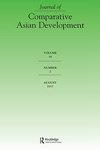Heterogeneity in the Effects of Group Lending in Microfinance-The Case of Mongolia
Q3 Social Sciences
引用次数: 1
Abstract
This study examines the heterogeneity of the effects of the joint and several liability systems of microfinance in Mongolia. The heterogeneity was examined from three perspectives: consumption, repayment rate, and income. In terms of business income and business expenditure, the older the household, the greater the number of loans, and the more private businesses the household owns, the greater the business expenditure. For household consumption, there is no difference between group and individual lending except in the number of private businesses, but when we restrict the analysis to food consumption, group lending increases food consumption more for households with more than one borrower and borrowers with longer borrowing periods. While more variable heterogeneity was found for the whole sample, only age and borrowing duration were found to affect household income across different types of microfinance for the poorest households with below median household income. The results of this study suggest that even if there was no significant difference in each attribute between the treatment and control groups, joint and several liabilities may or may not be effective depending on the level of the attribute. To maximize the effect of a simple measure, it is important to understand the factors that affect heterogeneity and the effective level of the heterogeneity. Even if a measure is not effective, it may become effective if the level of the attribute changes.小额信贷中群体贷款效应的异质性——以蒙古为例
本研究考察了蒙古小额信贷共同责任制度和若干责任制度影响的异质性。从消费、还款率和收入三个角度考察了其异质性。在营业收入和营业支出方面,家庭年龄越大,贷款数量越多,家庭拥有的私营企业越多,营业支出越大。对于家庭消费,除了私营企业的数量不同外,团体贷款和个人贷款之间没有区别,但当我们将分析限制在食品消费时,对于有一个以上借款人的家庭和借贷期限较长的借款人,团体贷款增加了更多的食品消费。虽然在整个样本中发现了更多的可变异质性,但对于家庭收入低于中位数的最贫困家庭,只有年龄和借款期限会影响不同类型小额信贷的家庭收入。本研究的结果表明,即使治疗组和对照组之间的每个属性没有显著差异,根据属性的水平,连带责任可能有效,也可能无效。为了使简单测量的效果最大化,了解影响异质性的因素和异质性的有效水平是很重要的。即使一个措施是无效的,如果属性的级别发生变化,它也可能变得有效。
本文章由计算机程序翻译,如有差异,请以英文原文为准。
求助全文
约1分钟内获得全文
求助全文
来源期刊

Journal of Comparative Asian Development
Social Sciences-Political Science and International Relations
CiteScore
1.30
自引率
0.00%
发文量
2
期刊介绍:
The Journal of Comparative Asian Development (JCAD) aims to offer the most up-to-date research, analyses, and findings on the many aspects of social, economic, and political development in contemporary Asia conducted by scholars and experts from Asia and around the world.
 求助内容:
求助内容: 应助结果提醒方式:
应助结果提醒方式:


